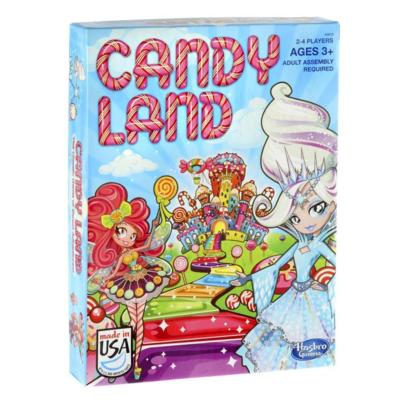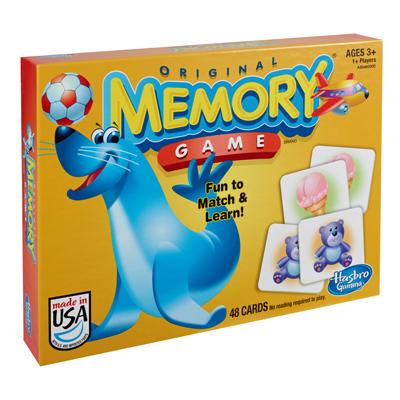No More “Bored” Games: Using Board Games in Creative Ways for Multiple Ages and Skill Levels
Okay, this was originally written as a presentation I gave to some other preschool teachers at a corporate inservice we had, so it is very detailed, but I worked hard on it, and I think it has some really great ideas if you're on a budget or have a weird collection of old board games at your place.The games discussed are classics, Candy Land, UNO, and Memory.
BENEFITS of Mass produced Games
They Teach:
- Fine Motor Skills
- Colors/Numbers/ Shapes
- Matching
- Strategy
- Taking Turns/ Sharing
- Good Sportsmanship
DETRIMENTS of Mass produced Games
They can:
- Be overwhelming or confusing for small children
- Have too many pieces
- Have too many rules
- Be costly to replace
Here are some suggestions to adjust these games to your kids' skill level. Some suggestions make them easier, some make them harder, and some make them very, very different.
CANDY LAND
Idea #1
Play the regular way. Kids love this game. If you have some children who get really competitive, remove the pink cards so no one gets a huge advantage or disadvantage.
Idea #2 (Cards Only)
Have children sort the cards by color. Then have them separate the cards with one square and two squares. Then, let them mix them all up again to play the game or try again!
Idea #3 (Cards only)
Use the cards as a listening game with colored (red, orange, yellow, blue, green and purple) blocks or Legos. Draw a card and have children build a tower according to the card. Ex: stack two red blocks, stack one yellow block.
Idea #4
Use a six sided die (or two) for kids who are learning to count. The game won’t change much, but you’ll be reinforcing number skills. If you still want to include the cards, make a rule to pick a card when a child rolls one (or whatever number).
Idea #5
Let children pick two cards from the stack at a time. Allow them to choose which card they want to use. Which will take them further? A single red or a double red? A double yellow or a double purple? Making this decision aids in problem solving and predicting outcomes.
Idea #6
Extreme Candyland : Take out the single square cards and use only the doubles for faster game play. Assign different physical activities for each color (Ex. Purple= spin in a circle, blue=j umping jacks, etc.) The children must perform the task before moving their game piece. (from SPDbloggernetwork)
UNO
Idea #1
This game allows players to match colors or numbers, and strategize which cards to play when. Some cards mean a change in game play (reverse, skip, etc) and drawing, holding, and discarding cards can improve fine motor skills.
Idea #2
Sort cards by color or number. If sorting by number, remove the “special” cards (Skip, Reverse, Wild, and Draw 4).
Idea #3
Remove one color of cards per player, 0-9. Shuffle them and allow the children to put them in the correct order. Once this has been mastered, give them different colored cards 0-9 for an additional challenge.
Idea #4
With two players, each child lays out a card and determines which is higher and which is lower. With a group, everyone lays out a card and, two cards at the time, make comparisons.
Idea #5
Have a child draw a card. Let them use teddy bears/ bingo markers/ pompoms in corresponding colors to show how many the card says. Ex. Red 8=8 red pom poms.
For younger children, limit the deck for numbers 1-3 or 1-5.
Idea #6
Play some additional Card Games using the UNO deck if you don’t have a traditional card deck. (Skip=Jack, Reverse=Queen, Draw 4=King) . Go Fish or Old Maid are popular.
Try http://www.activityvillage.co.uk/card-games for some great card game ideas.
MEMORY GAME
Idea #1:
Turn all of the cards upside down and allow children to turn over two cards at a time in the classic version of this game. If a player picks two matching cards, they get another turn. Whoever has the most at the end, wins! This is great for early memory skills.
It comes in many formats including Dr. Seuss, Dora the Explorer, Toy Story, Strawberry Shortcake, The Backyardigans, etc.
Idea #2:
Try the classic game, but with some alternative rules.
- Limit the number of cards/matches (some boxes have 72 pieces!)
- No one gets an extra turn, even with a match, to prevent a slow down in game play
- Collect the matches as children make them (no winners/losers)
- Allow younger children to draw 3 cards at the time, improving the possibility of a match and speeding up game time
Idea #3:
Use the cards for simple identification. Ask children to name the object on each card. You could also place all the cards right side up and have each child look for a specific picture.
The original version is best for this, as some children might not be familiar with the themed characters.
Idea #4
Use half or all of the cards and have children separate them into categories, like clothing, animals, toys, or food, or pictures of a certain character if using a themed deck.
Idea #5
Make your own Memory Game. Use letters, numbers, simple pictures, or even photos of each student to create a game tailored to your own needs.
Do you have any other alternative ways to play mass produced games? Be sure to comment!




No comments:
Post a Comment